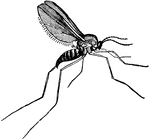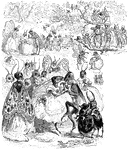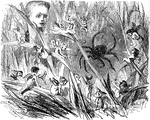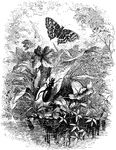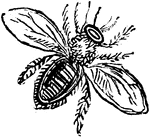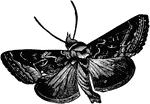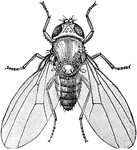
Common Fruit Fly
The Common Fruit Fly (Drosophila melanogaster) is an insect in the Drosophilidae family. The species…
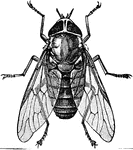
Dorsal View of Horsefly
Tabanus americanus is a species of biting horsefly in the Tabanidae family of horseflies. It was also…
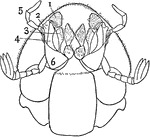
Ventral View of Dung Beetle
"Under Surface of Head of Tumble-bug (Copris carolina), about four times natural size. 1, galea; 2,…
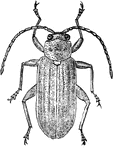
Dorsal View of Leaf Beetle
Galeruca notata is a beetle species in the Chrysomelidae family of leaf beetles.
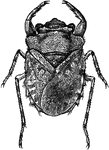
Dorsal View of Toad Bug
Galgulus oculatus is a true bug species in the Gelastocoridae family of toad bugs.
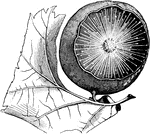
Oak Apple Gall
"Gall, or Oak-apple, produced by Cynips quercus-inanis, showing the internal cobwebby structure. Gall:…
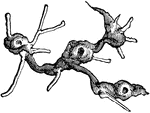
Grape Gall Louse Damage
"Grape Gall-louse (Phylloxera vastatrix), the small figures showing natural sizes. Roots of vine, showing…
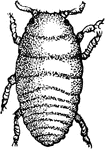
Grape Gall Louse Larva
"Grape Gall-louse (Phylloxera vastatrix), the small figures showing natural sizes. Larva as it appears…
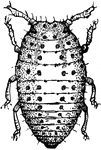
Grape Gall Louse
"Grape Gall-louse (Phylloxera vastatrix), the small figures showing natural sizes. Form of mature louse."…

Grape Gall Louse
"Grape Gall-louse (Phylloxera vastatrix), the small figures showing natural sizes. Form of mature louse."…
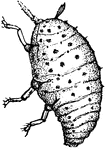
Grape Gall Louse
"Grape Gall-louse (Phylloxera vastatrix), the small figures showing natural sizes. Form of mature louse."…

Dorsal View of Gall Moth
Gelechia gallae-solidaginis is a species of gall moth, an insect in the Gelechiidae family of Gelechiid…
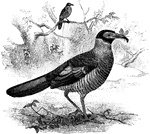
Two Radiated Ground Cuckoo, One with an Insect in its Mouth, the Other in a Tree Branch in a wooded Area
"The plumage is brownish, with white margins to the feathers and a purple tinge on the rufous-mottled…

Nast Shoos Herald Insect
Nast shoos away the Herald insect while a caricature of the "Caesar Ghost," a caricature of a caricature,…
Protozoan
Gregarina, a protozoan, various species which live in the alimentary canal of crayfishes, centipeds,…
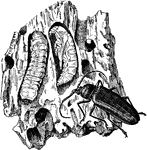
Beetle
Beetles are the group of insects with the largest number of known species. The general anatomy of beetles…

Metamorphosis of a Monarch Butterfly
A butterfly is an insect of the order Lepidoptera. Like all Lepidoptera, butterflies are notable for…
Metamorphosis of a Monarch Butterfly
A butterfly is an insect of the order Lepidoptera. Like all Lepidoptera, butterflies are notable for…
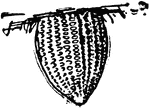
Metamorphosis of a Monarch Butterfly
A butterfly is an insect of the order Lepidoptera. Like all Lepidoptera, butterflies are notable for…
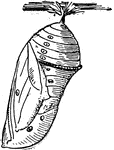
Metamorphosis of a Monarch Butterfly
A butterfly is an insect of the order Lepidoptera. Like all Lepidoptera, butterflies are notable for…
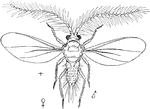
Scale Insects
The scale insects are small insects of the order Hemiptera, generally classified as the superfamily…

Scale Insects
The scale insects are small insects of the order Hemiptera, generally classified as the superfamily…

Ichneumon Fly
Ichneumon flies are solitary insects, and most are parasitoids—the larvae feeding on or in another…
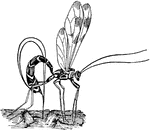
Ichneumon Fly
Ichneumon flies are solitary insects, and most are parasitoids—the larvae feeding on or in another…
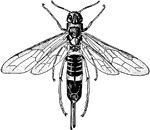
Pigeon Horntail
An insect known as the pigeon horntail (Tremex columba) deposits its eggs, by means of a strong, piercing…
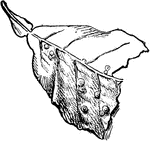
Scale Insects
The scale insects are small insects of the order Hemiptera, generally classified as the superfamily…
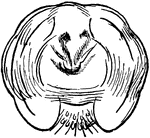
Scale Insects
The scale insects are small insects of the order Hemiptera, generally classified as the superfamily…
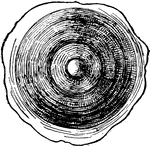
Scale Insects
The scale insects are small insects of the order Hemiptera, generally classified as the superfamily…
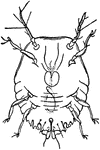
Scale Insects
The scale insects are small insects of the order Hemiptera, generally classified as the superfamily…

Scale Insects
The scale insects are small insects of the order Hemiptera, generally classified as the superfamily…
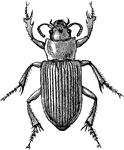
Caraboid Beetle
"Geopinus incrassatus. GEOPINUS. A genus of caraboid beetles, of the subfamily Harpalinae, having the…
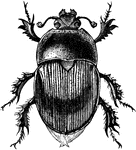
Drone Beetle
"Drone-beetle (Geotrypes splendidus). GEOTRYPES. A Fabrician genus of beetles typical of the family…
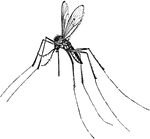
Mosquito
"A small two-winged fly, Culex pipiens, of the family Culicidae, suborder Nemocera, and order Diptera,…

Ichneumon Fly
"Gonatopus contortulus. A genus of ichneumon-flies of the family Proctotrupidae and subfamily Dryininae,…

Leaf Blotch Miner Moth
"Gracilaria salicifoliella. GRACILARIA. In entomology, the typical genus of Gracilariidae, containing…

European Grapevine Moth
The European Grapevine Moth (Lobesia botrana) is an insect in the Tortricidae family of tortrix moths.

Plum Moth
"Plum-moth (Grapholitha prunivora). GRAPHOLITHA. A genus of small and peculiarly marked tortricid moths,…

Red-Legged Grasshopper
A female Red-Legged Grasshopper. Melanoplus femurrubrum is an insect in the Acrididae family of grasshoppers.
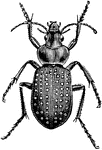
Fiery Ground Beetle
The Fiery Ground Beetle (Calosoma calidium) is an insect in the Carabidae family of carabids.

Field Cricket
The Field Cricket (Gryllus pennsylvanicus) is an insect in the Gryllidae family of crickets. It was…
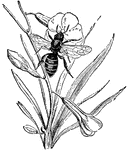
Bee Pollinating a Flower
"Bee, the common name given to a large family of hymenopterous or membranous-winged insects, of which…
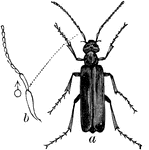
Blister Beetle
Beetles (Coleoptera) in the family Meloidae are commonly known as blister beetles, after their defensive…
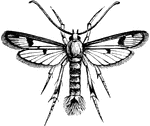
Sugar-Maple Moth
An illustration of a sugar-maple moth. A moth is an insect closely related to the butterfly, both being…

Ox Botfly
"Ox Botfly. a.-- larva, full grown, natural size; b,-- pupa; c.-- perfect insect. Botfly, Gadfly, and…
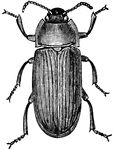
Mealworm Beetle
Mealworms are the larva form of the mealworm beetle, Tenebrio molitor, a species of darkling beetle.…
Mealworm Larva
Mealworms are the larva form of the mealworm beetle, Tenebrio molitor, a species of darkling beetle.…
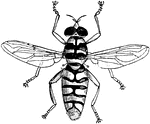
Hoverfly
Flies in the family Syrphidae are commonly known as hoverflies, flower flies, or syrphid flies.As their…
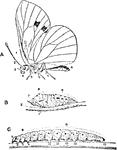
Three Stages of Cabbage Buterfly
A sequenced illustration of the cabbage butterfly undergoing metamorphosis. The butterfly starts out…

Window Screen Construction
A window screen is a metal wire fiberglass; synthetic fiber mesh stretched in a frame of wood or metal…

Spotted Ladybird
Also known as megilla maculata. A-Larva; B-Empty skin; C-Beetle with enlarged antenna above.

Stink Bug
Also known as Stiretrus anchorago. This bug is predatory of the larvae of the Mexican bean beetle and…
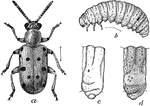
Crioceris 12-Punctata
"The mature beetle in life rivals asparagi in beauty, but may be distinguished by its much broader elytra…
